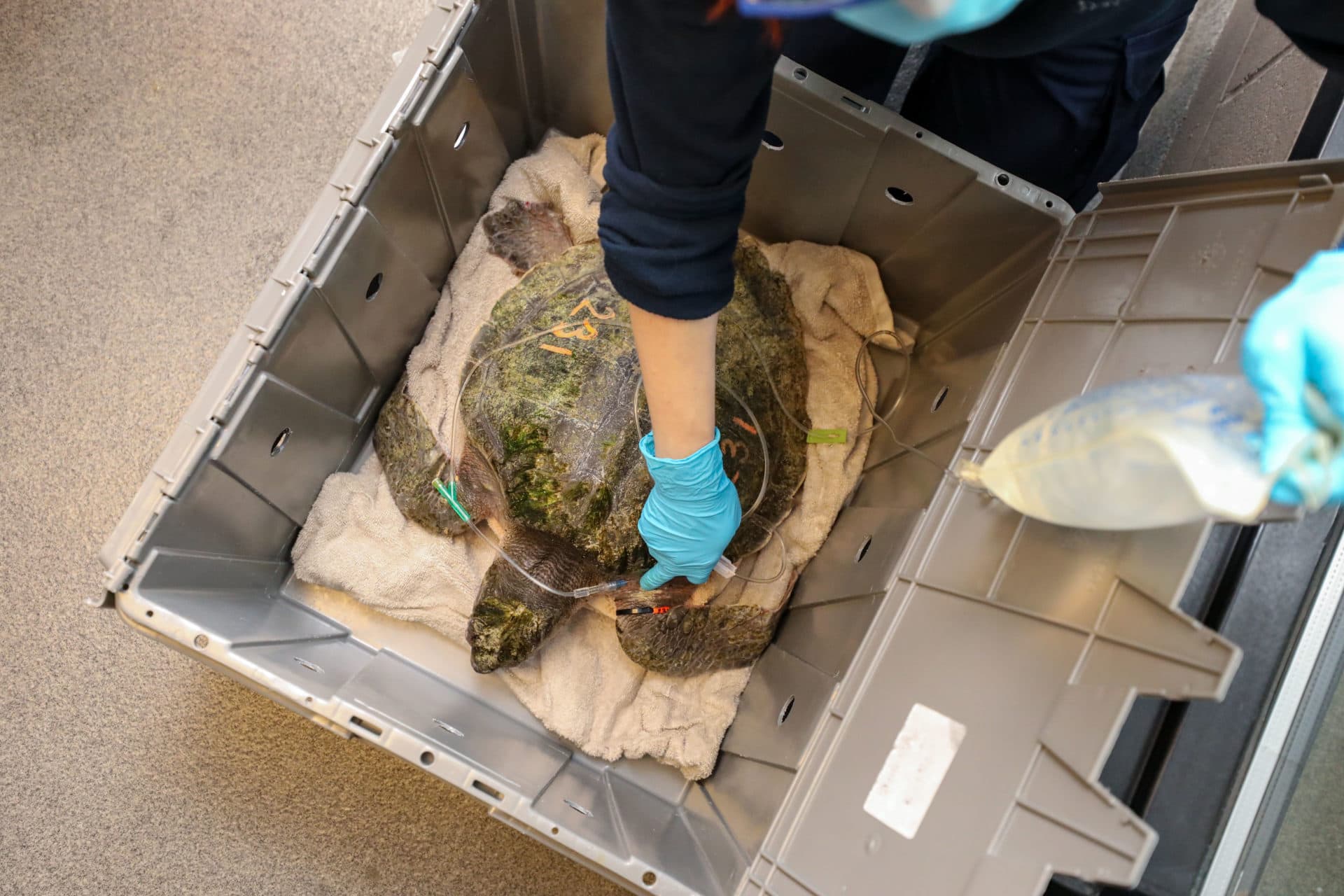Advertisement
Warmer currents may lead sea turtles to danger in Cape Cod Bay

The number of turtles becoming hypothermic and getting trapped in Cape Cod Bay has been increasing over the past decade. Researchers say it may stem from warming oceans that are influencing the turtles' geographic range and the timing of their migration.
Sea turtles have had hypothermia and washed up on shore in the region since the 1970s, but numbers have increased considerably.
“Now we're seeing hundreds of turtles, really, where we used to see tens,” said Adam Kennedy, the director of the New England Aquarium’s Sea Turtle Hospital. He said the number has roughly quadrupled since around 2012.
So far this year, Sea Turtle Hospital is taking care of more than 100 animals — about 80 Kemp's ridley turtles, an endangered species, and 30 green turtles. By December, they expect to be seeing loggerheads.
At the hospital, the turtles are gradually warmed up in different tanks to help them recover their ability to swim and eat. They also get x-rays and receive treatment for dehydration and diseases like pneumonia.
Once they've recovered, some turtles will be released in warmer waters in the southeast in states like Florida and Georgia and others will over-winter at the aquarium to be released next summer. Rescue teams expect to see more turtles washing up through December of this year, and they plan to keep treating them.

Researchers say it’s concerning that the number of stranded turtles has increased over the last decade. Some studies suggest the increase is due in large part to climate change warming the ocean off the New England coast, which is allowing the turtles to venture further north.
“With the warming of the Gulf of Maine, that kind of wall of cold water pushing them south isn't there as much throughout the summer as it would have been previously,” Kennedy said.
When it's time to migrate south, Kennedy says they get trapped into the hook of the bay. And it’s counterintuitive for them to swim north and loop around the Cape.
Lucas Griffin, a researcher at University of Massachusetts Amherst, studied Kemp’s Ridley sea turtles in the Cape Cod Bay. He said his study suggested warmer late summers and early falls are driving higher cases of cold-stunned turtles. Longer-lasting warm water leads the turtles to delay their migration south, and then they are unexpectedly caught in cold weather. Once a turtle becomes hypothermic, it often loses flipper control and cannot swim, which can lead to its death.
Advertisement
“In the Gulf of Maine, some put it as upwards of over 90% rapid increase in temperature compared to other areas. So we expect this trend to continue into the future,” said Griffin.
As temperatures keep rising, Griffin and other scientists expect the number of cold-stunned sea turtles will keep increasing.
This segment aired on November 29, 2022.
